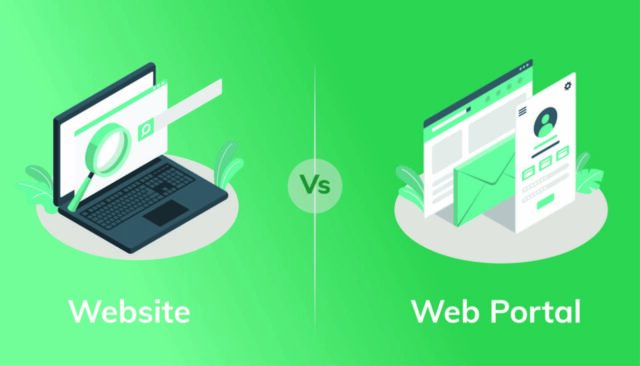
Web portals have become an integral part of the online ecosystem, offering a centralized platform for various user interactions and services. These portals are tailored to cater to specific needs, ranging from business operations to community engagement. The introduction to web portals should highlight their definition and importance in the digital world, explaining how they differ from standard websites.
It should also touch upon the different types of web portals, each serving distinct purposes and audiences, from providing business solutions and educational resources to facilitating government services and healthcare management. This introduction sets the stage for a detailed exploration of the diverse range of web portals and their unique functionalities.
Business-to-Consumer (B2C) Portals
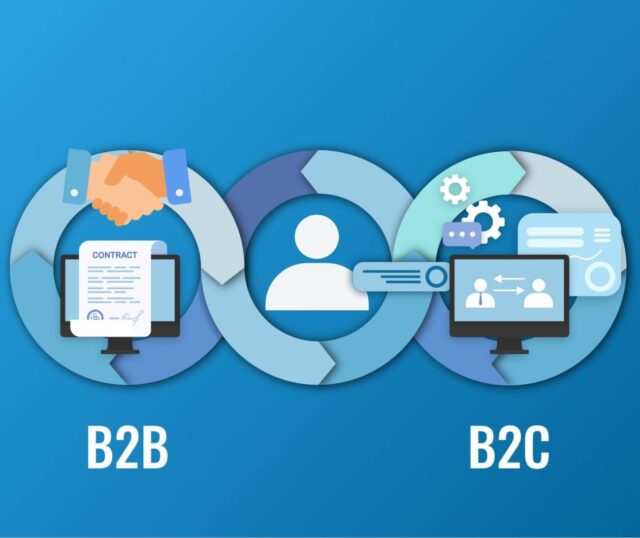
In this section, we will delve into the realm of Business-to-Consumer (B2C) portals, highlighting their essential characteristics and their significance within the consumer market.
- Definition and Purpose: B2C portals are online platforms designed to facilitate interactions between businesses and individual consumers. These portals serve as digital gateways that connect consumers with a wide range of products, services, and information offered by businesses. Their primary purpose is to provide consumers with a convenient and user-friendly environment for making purchases, accessing information, and engaging with brands.
- Features of B2C Portals: B2C portals exhibit several key features that set them apart in the digital landscape: a. Product Catalogs: These portals typically showcase extensive catalogs of products and services, enabling consumers to browse and compare offerings. b. User Profiles: Users can create profiles to personalize their experiences, save preferences, and track their interactions with the portal. c. E-commerce Functionality: B2C portals often include secure payment gateways, shopping carts, and order management systems to facilitate online transactions. d. Customer Reviews and Ratings: They incorporate user-generated content, such as reviews and ratings, to help consumers make informed decisions. e. Customer Support: Many B2C portals offer customer support features like chatbots, FAQs, and contact forms for addressing user inquiries and concerns. f. Personalization: Advanced algorithms are employed to recommend products and content based on user behavior and preferences. g. Mobile Accessibility: B2C portals are usually optimized for mobile devices, ensuring accessibility and convenience for users on the go.
- Catering to the Consumer Market: B2C portals are tailored to meet the unique needs and preferences of individual consumers. They empower consumers by providing a seamless online shopping experience, access to valuable information, and opportunities for engagement with brands. With the growing popularity of online shopping and digital services, B2C portals play a vital role in shaping the way businesses connect with their customers, fostering loyalty and trust in the process.
In summary, Business-to-Consumer (B2C) portals are instrumental in bridging the gap between businesses and individual consumers, offering a host of features and functionalities that enhance the consumer’s online experience. Their continued evolution and adaptation to consumer preferences make them a key component of the contemporary digital landscape.
Business-to-Business (B2B) Portals
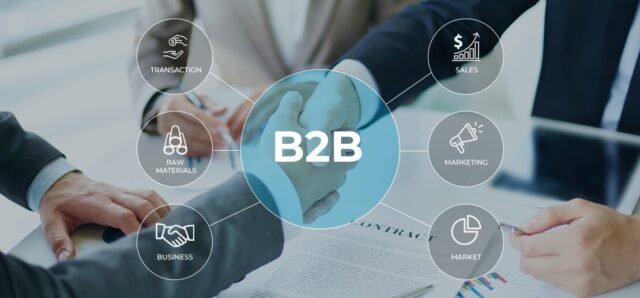
In the realm of web portal development services, Business-to-Business (B2B) portals occupy a pivotal role, serving as digital platforms that facilitate interactions, transactions, and collaborations between businesses, suppliers, and distributors. These specialized web portals cater exclusively to the intricate needs of the corporate world, offering a range of sophisticated features and functionalities to streamline B2B operations.
- Definition and Purpose: B2B portals are sophisticated online platforms designed to foster seamless communication and transactions among businesses within a specific industry or across various sectors. The primary purpose of B2B portals is to enhance efficiency, reduce costs, and improve the overall business ecosystem by providing a centralized hub for B2B interactions. These portals act as a bridge between organizations, enabling them to share data, conduct negotiations, and manage procurement, sales, and supply chain activities.
- Key Features of B2B Portals: B2B portals are characterized by a range of critical features, including:
- Supplier and Buyer Profiles: Users can create detailed profiles that showcase their products, services, and business credentials.
- Product Catalogs: Businesses can list their offerings, complete with specifications, pricing, and availability.
- Order Management: Robust systems for order placement, tracking, and fulfillment ensure smooth transactions.
- Inventory Management: Real-time inventory tracking helps businesses optimize their supply chains.
- Secure Transactions: Advanced encryption and authentication protocols ensure the security of financial transactions.
- Collaboration Tools: Communication features such as messaging, video conferencing, and document sharing enable seamless collaboration between partners.
- Analytics and Reporting: Businesses can gain insights into their performance through data analytics and reporting tools.
- Role in Facilitating Business Interactions: B2B portals play a pivotal role in enhancing business interactions in several ways:
- Efficiency: They streamline procurement processes, reducing manual effort and errors.
- Cost Reduction: By automating tasks and optimizing workflows, B2B portals help businesses cut operational costs.
- Market Expansion: Businesses can reach a broader market and discover new partners and opportunities.
- Data-Driven Decisions: Access to real-time data empowers businesses to make informed decisions.
- Transparency: B2B portals promote transparency in transactions and negotiations, fostering trust among partners.
In conclusion, Business-to-Business (B2B) portals, supported by web portal development services, are indispensable tools for modern businesses seeking to optimize their interactions and transactions with partners, suppliers, and distributors. Their advanced features and secure infrastructure make them a cornerstone of efficient B2B operations, enabling businesses to thrive in an increasingly interconnected and competitive market landscape.
Government Portals
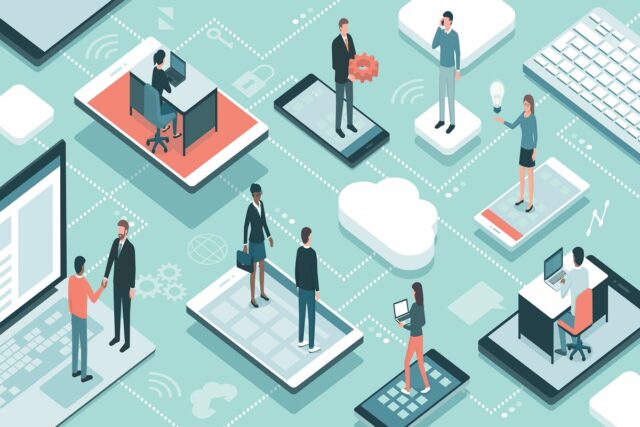
Government portals are pivotal components of modern e-governance strategies, offering citizens and businesses a centralized digital gateway to access a wide array of public services, information, and administrative functions. These sophisticated online platforms are developed to enhance the efficiency, transparency, and accessibility of government operations, fostering greater citizen engagement and participation in the democratic process.
Key Functions and Features of Government Portals:
- Service Access: Government portals serve as a one-stop destination for citizens to access an extensive range of public services, such as obtaining permits, licenses, or submitting applications for social benefits. Key features include:
- User-friendly service catalogs.
- Secure authentication and authorization mechanisms.
- Integration with government databases for streamlined service delivery.
- Information Dissemination: Providing up-to-date information on government policies, regulations, and announcements is a critical role of these portals. Features include:
- News and updates sections.
- Access to government publications and reports.
- Interactive FAQs and information search.
- Online Transactions: Government portals facilitate online payments, tax filing, and other financial transactions, reducing the need for in-person visits. Key features encompass:
- Secure payment gateways.
- Electronic tax filing and payment systems.
- Integration with financial institutions.
- E-Participation: Promoting citizen engagement and participation in governance processes is a fundamental objective. Features that encourage e-participation include:
- Online forums and discussion boards.
- Feedback and complaint submission forms.
- Citizen surveys and polls.
- Document Management: Efficient document handling and record-keeping are crucial for government operations. Features include:
- Digital document submission and retrieval.
- Secure archival and data retention protocols.
- Electronic signatures and authentication.
- Customization and Personalization: Government portals often allow users to create profiles, customize their experience, and receive personalized notifications and alerts based on their preferences and interactions.
Significance of Government Portals:
Government portals play a pivotal role in achieving the following objectives:
- Enhanced Efficiency: By digitizing and automating many administrative processes, government portals reduce bureaucratic red tape, paperwork, and processing times, leading to greater efficiency and cost savings.
- Transparency: These portals promote transparency by making government information and services readily accessible to the public. Citizens can access information on government expenditures, policies, and decisions.
- Accessibility: Government portals ensure equitable access to public services, particularly for those who may have difficulty accessing government offices in person.
- Citizen Empowerment: By offering e-participation features, government portals empower citizens to voice their opinions, contribute to policymaking, and hold government entities accountable.
Healthcare Portals
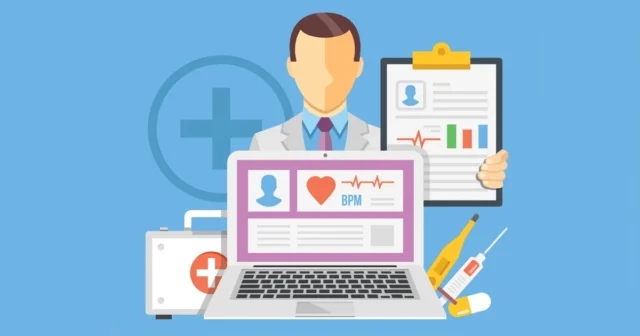
Healthcare portals have emerged as essential digital tools in the field of healthcare, revolutionizing patient care, and healthcare management. These portals are sophisticated online platforms designed to enhance the delivery of healthcare services, streamline administrative processes, and empower both patients and healthcare providers with access to critical medical information.
Key Functions and Features of Healthcare Portals:
- Patient Records and Information Access: Healthcare portals provide patients with secure access to their electronic health records (EHRs) and medical history. Features include:
- Detailed medical histories.
- Lab results and diagnostic reports.
- Medication lists and prescription history.
- Appointment Scheduling: Patients can schedule, reschedule, or cancel appointments with healthcare providers conveniently through the portal. This feature often includes:
- Real-time availability of providers.
- Automated appointment reminders.
- Telemedicine Integration: Many healthcare portals incorporate telemedicine capabilities, enabling virtual consultations with healthcare professionals, particularly valuable during the COVID-19 pandemic.
- Prescription Management: Patients can request medication refills, view prescriptions, and receive notifications about medication adherence.
- Billing and Insurance: Access to billing information, insurance claims, and payment options facilitates financial interactions with healthcare providers.
- Health and Wellness Resources: Portals offer educational resources, articles, and tools for patients to learn about health conditions, preventive care, and healthy living.
- Secure Messaging: Patients can communicate with their healthcare providers securely, seek medical advice, and share updates on their health status.
- Medical Forms and Document Submission: Patients can upload documents, such as medical history, consent forms, or insurance information, for healthcare providers’ review.
Significance of Healthcare Portals:
- Improved Patient Engagement: Healthcare portals empower patients to actively participate in their healthcare decisions, monitor their health, and communicate with their healthcare providers, leading to improved engagement and adherence to treatment plans.
- Enhanced Efficiency: By digitizing administrative tasks, such as appointment scheduling and billing, healthcare portals reduce administrative burdens on healthcare providers, allowing them to focus more on patient care.
- Better Information Sharing: Portals facilitate seamless sharing of medical information among healthcare providers, ensuring coordinated and integrated care, especially for patients with complex medical needs.
- Access to Telemedicine: In times of crisis or for patients with limited mobility, telemedicine integration in healthcare portals offers a crucial avenue for remote medical consultations and care.
- Data Security and Compliance: Healthcare portals prioritize data security and compliance with healthcare regulations, ensuring the confidentiality and integrity of patient information.
- Enhanced Patient Satisfaction: By providing convenient access to medical information and services, healthcare portals contribute to higher patient satisfaction and loyalty.
In conclusion, web portals have become indispensable tools across a diverse range of sectors, offering tailored solutions to meet the specific needs and demands of various stakeholders. These digital gateways, fueled by web portal development services, have redefined the way organizations interact with their audiences, share information, and conduct transactions. Here, we summarize the distinct roles and significance of the web portals discussed in this document:
- Business-to-Consumer (B2C) Portals: These portals facilitate seamless interactions between businesses and individual consumers, enhancing the consumer experience and fostering brand loyalty. Features such as personalized recommendations, e-commerce functionality, and mobile accessibility are pivotal in catering to the consumer market.
- Business-to-Business (B2B) Portals: B2B portals serve as vital platforms for businesses to collaborate, exchange information, and conduct transactions. Their features, including supplier and buyer profiles, order management systems, and document management, streamline B2B interactions and enhance operational efficiency.
- Government Portals: Government portals are critical components of e-governance strategies, providing citizens and businesses with a digital interface for accessing public services, information, and administrative functions. These portals promote transparency, accessibility, and citizen engagement in governance processes.
- Healthcare Portals: Healthcare portals revolutionize patient care by offering secure access to electronic health records, appointment scheduling, telemedicine integration, and enhanced communication between patients and healthcare providers. They empower patients to take an active role in their healthcare decisions.
In each of these sectors, web portals have proven to be catalysts for efficiency, transparency, and engagement. They enable organizations to adapt to evolving digital landscapes, meet the ever-increasing demands of users, and drive innovation within their respective domains. As technology continues to advance, we can expect web portals to evolve further, offering even more sophisticated features and functionalities to meet the dynamic needs of users and organizations alike. In this digital age, web portals remain instrumental in shaping the way we interact, conduct business, and access essential services.



